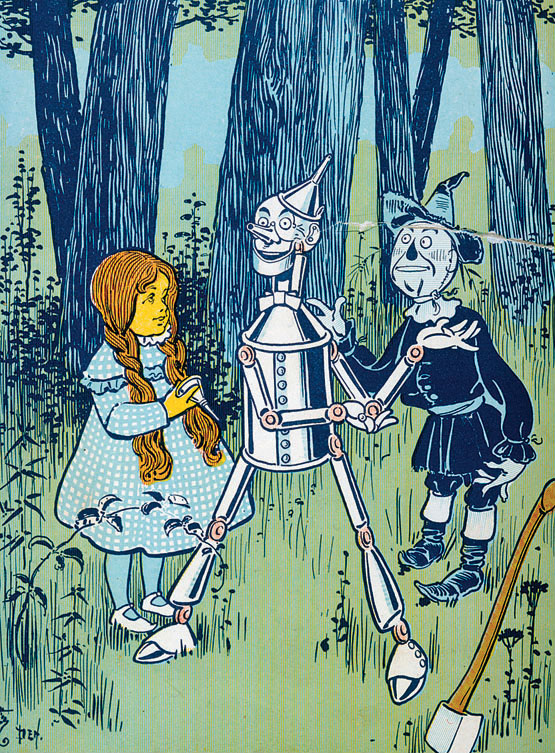A Fly Without a Heart
493

The heart of a fruit fly is a simple organ, an open-ended tube that rhythmically contracts, pumping fluid—rather inefficiently—around the body of the fly. Although simple and inelegant, the fruit fly’s heart is nevertheless essential. Remarkably, a few rare mutant fruit flies never develop a heart and die (not surprisingly) at an early embryonic stage. Geneticist Rolf Bodmer analyzed these mutants in the 1980s and made an important discovery—a gene that specifies the development of a heart. He named the gene tinman, after the character in The Wizard of Oz who also lacked a heart. Bodmer’s research revealed that tinman encodes a transcription factor that binds to DNA and turns on other genes that are essential for the normal development of a heart. In the mutant flies this gene was lacking, the transcription factor was never produced, and the heart never developed. Findings from subsequent research revealed the existence of a human gene (called Nkx2.5) with a sequence similar to that of tinman, but the function of the human gene was unknown.
Then, in the 1990s, physicians Jonathan and Christine Seidman began studying people born with abnormal hearts, such as those with a hole in the septum that separates the chambers on the left and right sides of the heart. Such defects result in abnormal blood flow through the heart, causing the heart to work harder than normal and mixing oxygenated and deoxygenated blood. Congenital heart defects are not uncommon; they’re found in about 1 of every 125 babies. Some of the defects heal on their own, but others require corrective surgery. Although surgery is often successful in reversing congenital heart problems, many of these patients begin to have irregular heartbeats in their 20s and 30s. The Seidmans and their colleagues found several families in which congenital heart defects and irregular heartbeats were inherited together in an autosomal dominant fashion. Detailed molecular analysis of one of these families revealed that the gene responsible for the heart problems was located on chromosome 5, at a spot where the human tinman gene (Nkx2.5) had been previously mapped. All members of this family who inherited the heart defects also inherited a mutation in the tinman gene. Subsequent studies with additional patients found that many people with congenital heart defects have a mutation in the tinman gene. The human version of this gene, like its counterpart in flies, encodes a transcription factor that controls heart development. Despite tremendous differences in size, anatomy, and physiology, humans and flies use the same gene to make a heart.
494
The story of tinman illustrates the central importance of studying mutations: the analysis of mutants is often a source of key insights into important biological processes. This chapter focuses on gene mutations—how errors arise in genetic instructions and how those errors are studied. We begin with a brief examination of the different types of mutations, including their phenotypic effects, how they can be suppressed, and mutation rates. The next section explores how mutations spontaneously arise during and after the course of DNA replication, as well as how chemicals and radiation induce mutations. After discussing the analysis of mutations, we turn to transposable elements, DNA sequences that are capable of moving within the genome and which often produce mutations when they move. Finally, we take a look at DNA repair and some of the diseases that arise when DNA repair is defective.